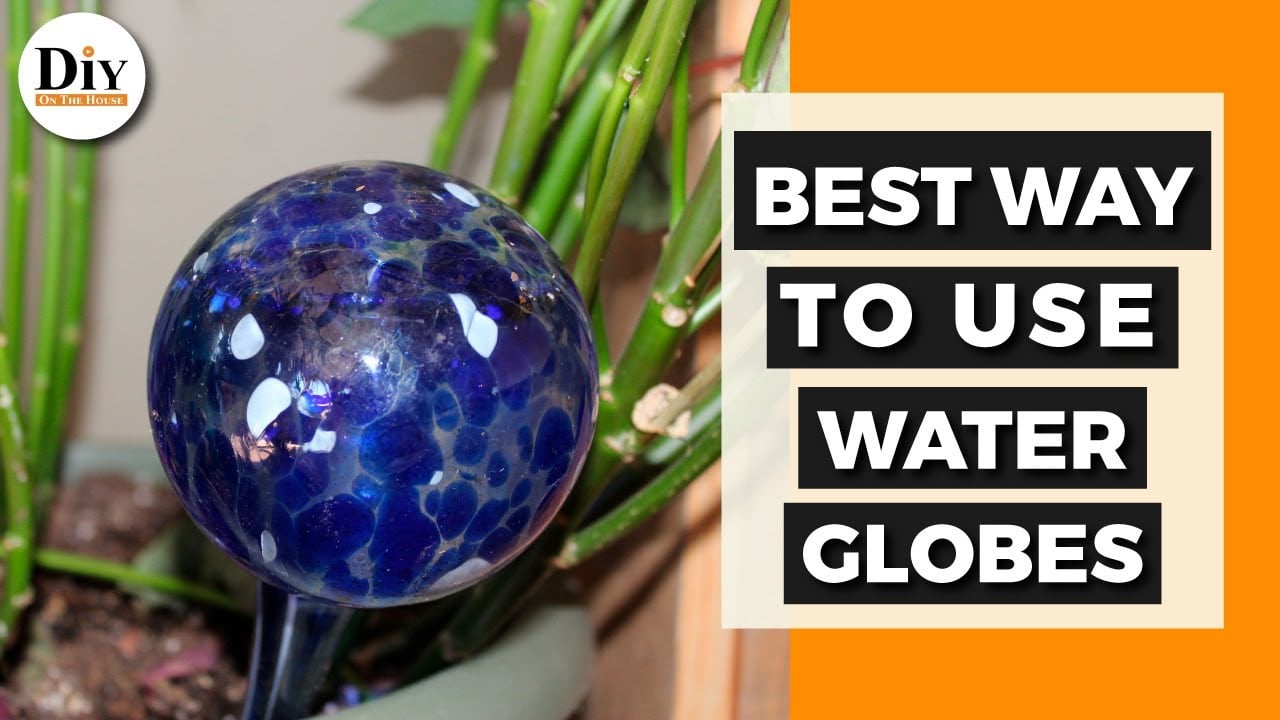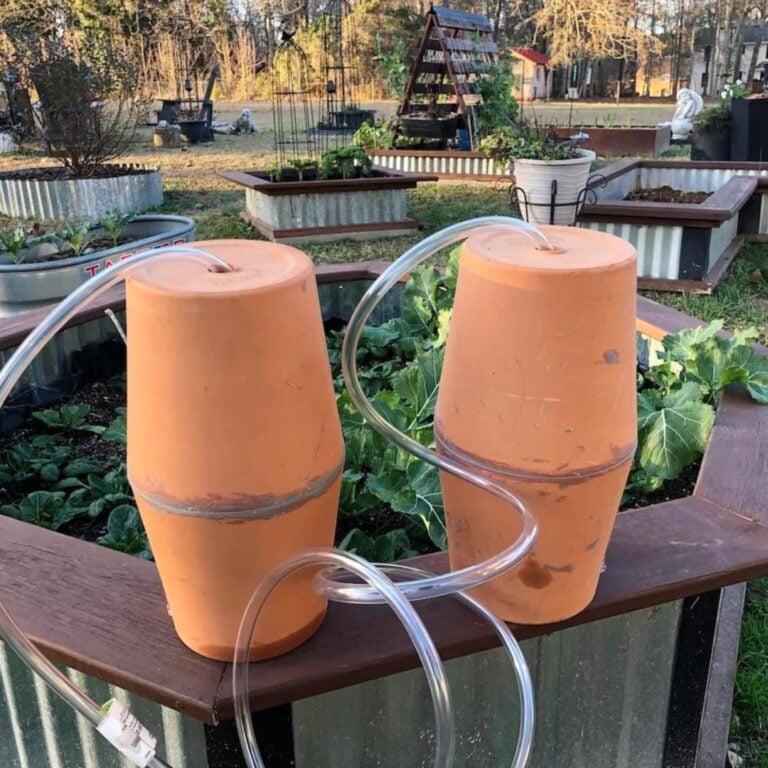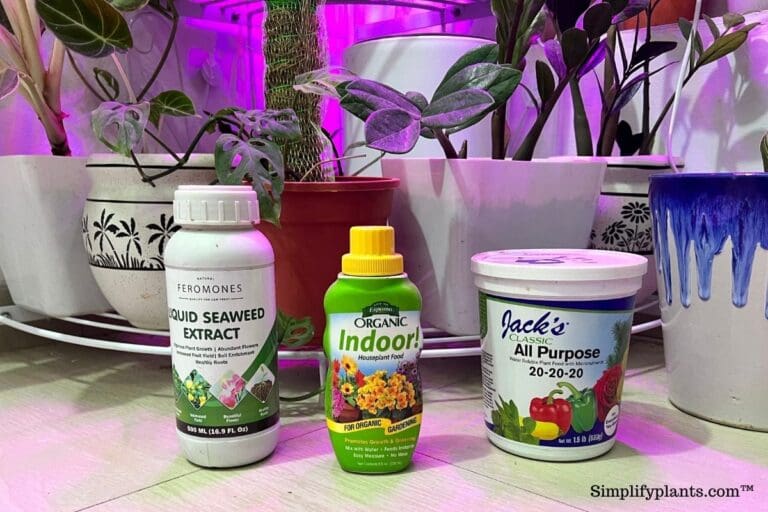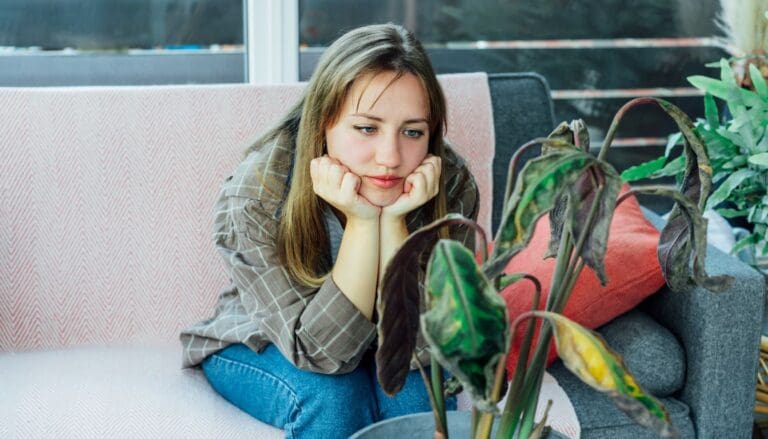4 Things Every Plant Parent Should Do Before Leaving Town For A Vacation
Whenever I’m packing up for a trip, I always find myself thinking about my plants. It’s a little silly, but I can’t help but worry about them when I’m gone.
Just a few quick steps before I leave gives me peace of mind—I know they’ll be alright until I get back.
Please note: Simplify Plants is reader-supported. As an Amazon Associate, I earn from qualifying purchases made by our readers with no extra cost added to you all! Some links in the post are affiliate links and I get a commission from purchases made through links in the post.
1) Set up a self-watering system with AquaGlobes
Before heading out, I always grab my AquaGlobes. They’re these glass bulbs that slowly drip water into the soil—honestly, they’re kind of a lifesaver.
Just fill one up, pop it deep into the dirt, and you’re set. The water seeps out as the soil dries, so it’s sort of a “set it and forget it” thing.
I’ve noticed my plants look a whole lot less droopy when I use these. Their leaves stay lush, even if I’m gone for a week or so.
AquaGlobes are great for medium or big pots. For smaller ones, I’ll use tinier self-watering gadgets or just don’t push the globe in as far.
I always check that the soil is already a bit damp before I stick the globe in. If it’s totally dry, the water can rush out too fast, which is not ideal.
For longer trips, I’ll throw in an extra globe for my biggest plants. I also move them out of harsh sunlight to help slow down water loss.
Honestly, setting this up takes barely any time. It’s such a simple way to make sure I come home to happy, healthy plants.
2) Place plants in indirect sunlight to avoid sunburn
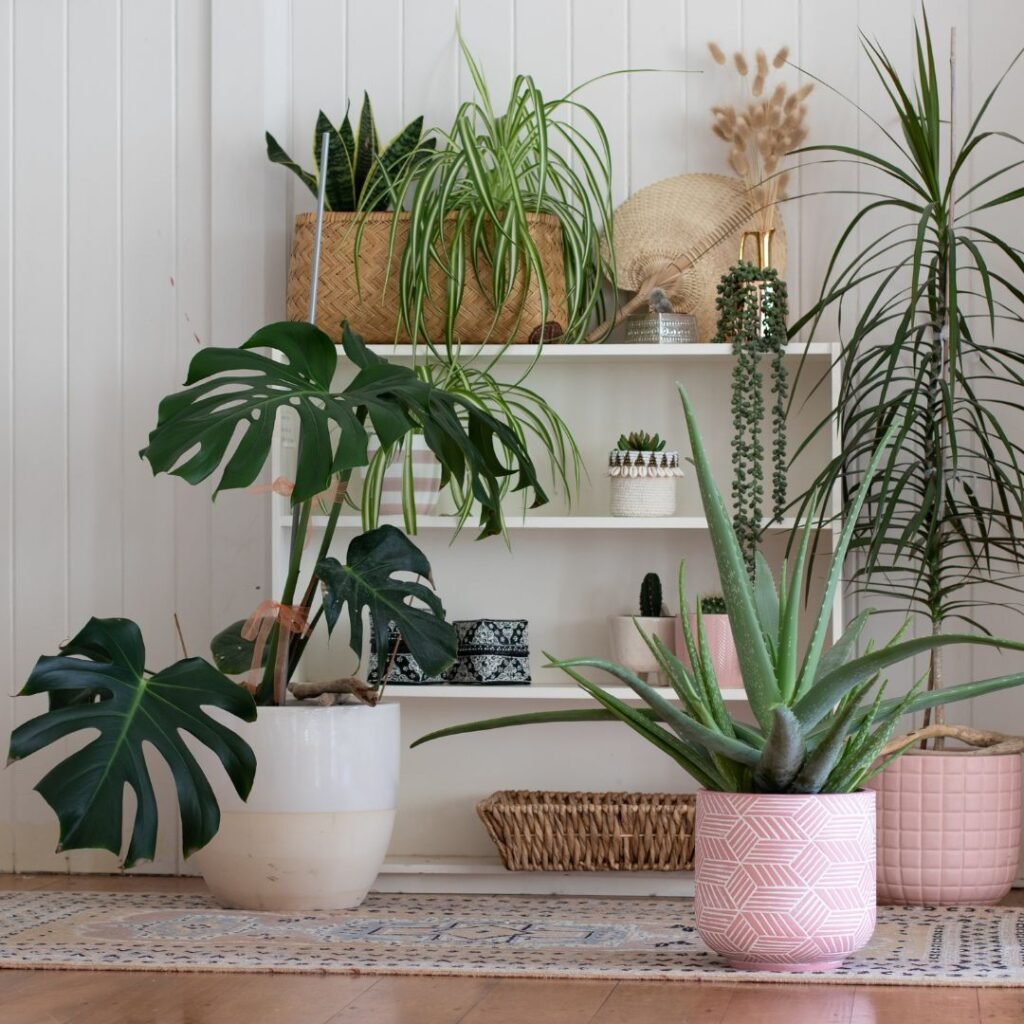
Before I leave, I always move my plants out of the direct sun. Bright sunlight can scorch leaves fast, especially if no one’s around to shift them.
I look for a spot with indirect light—maybe near a window with a sheer curtain. That way, they still get enough light but won’t fry.
Moving them off the windowsill is an easy fix. I’ll usually set them on a table a few feet away, just to be safe.
If a plant loves a lot of sun, I try to ease it into a shadier spot a couple days before I leave. It’s not perfect, but it helps them adjust.
For folks with a jungle of plants, grouping them together near filtered light can help. It actually keeps humidity up too, which is a nice bonus.
Some plants, like ferns or pothos, seem to do better with even less light while I’m away. I always double-check if any of mine need special treatment.
Keeping them out of direct sun is probably the easiest way to avoid crispy leaves. It’s a simple move, but it makes a big difference.
3) Prune dead leaves and stems to encourage growth
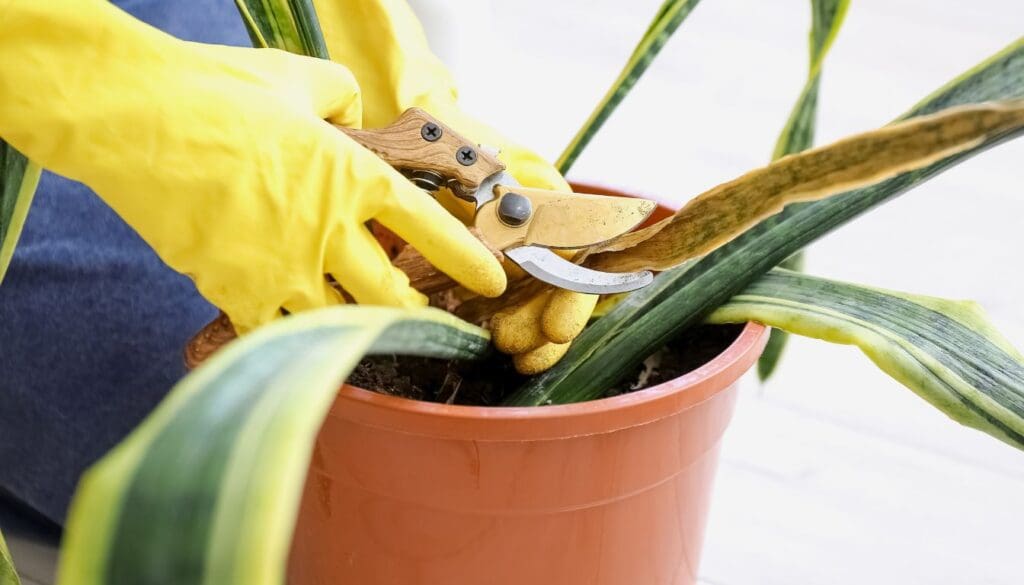
Right before leaving, I always scan my plants for dead leaves or stems. They’re not doing any good, and honestly, they just get in the way.
If I spot brown or crispy leaves, I just snip them off with clean scissors. It’s quick, and it helps my plant focus on fresh, healthy growth.
Pruning also keeps pests away since old leaves can attract bugs. Less clutter, fewer problems.
I’m careful not to go overboard. Just the dead or damaged stuff—if I cut too much, the plant gets stressed, and that’s the last thing I want before a trip.
It makes my plants look tidier and gives them a little boost for when I get back. Plus, I feel better knowing I did what I could.
4) Apply Slow-Release Fertilizer spikes like Osmocote
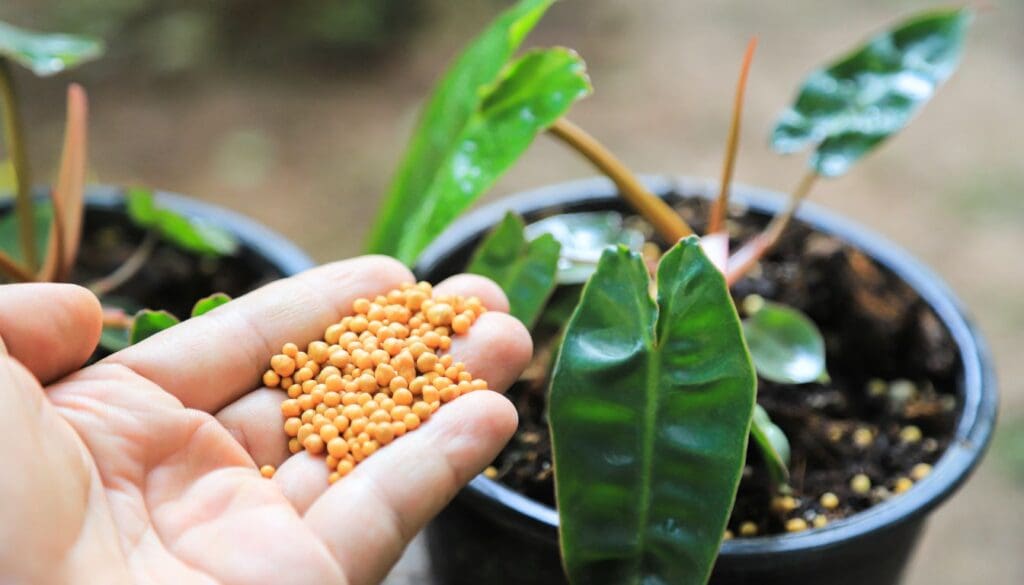
When I’m prepping to leave, I stick in some slow-release fertilizer spikes like Osmocote. These things slowly feed the plant, so they’re not starving while I’m gone.
All it takes is pushing a spike into the soil near the base. No messy mixing, no measuring, just done.
I don’t worry about overdoing it since the spikes only let out a little at a time. My plants seem to keep growing just fine, even if I’m away for a while.
Before I go, I check each pot and add a new spike if it’s due. It’s a tiny thing, but it really helps.
If you haven’t tried these, honestly, they make plant care so much easier when you travel.
Understanding Your Plants’ Vacation Needs
Whenever I’m about to leave, I do a quick check to make sure every plant will be okay. It’s worth figuring out what each one needs—watering, light, all that.
Identifying Plant Types and Care Requirements
I start by looking at what types of plants I have. Is it a cactus, a succulent, something leafy, or maybe a flowering plant? Each one’s got its own quirks.
Cacti and succulents usually need less water—they can go longer without much fuss. Leafy or flowering plants, though, might dry out faster, especially if it’s warm.
I’ll check any care tags or look up guides if I’m unsure. Just a quick note about lighting, temperature, and feeding helps me keep it all straight.
Here’s a simple table I use:
| Plant Name | Type | Needs |
|---|---|---|
| Jade Plant | Succulent | Low water |
| Peace Lily | Leafy | Medium water, shade |
| Orchid | Flowering | Humid, bright light |
Knowing what each plant wants saves me a lot of guessing. I like to group similar plants together when I’m planning their care.
Assessing Watering Schedules
I keep track of when I last watered each plant, usually on my phone calendar. Some need water weekly, others every other week. Cacti can go even longer, but ferns? Not so much.
I’ll poke my finger into the soil—if it’s dry an inch down, it’s time for a drink. For longer trips, I might use self-watering stakes or ask a friend to stop by if I’ll be gone more than a week.
Here’s my quick list:
- Plants that need water every few days: water right before I leave
- Plants that can wait longer: water a bit less so they don’t get soggy
This way, I don’t stress about coming home to a bunch of wilted leaves.
How Absence Affects Indoor Ecosystems

Whenever I’m away, I know my plants’ little ecosystems can shift fast. I always keep an eye (well, before I leave) on humidity, temperature, and light.
Humidity and Temperature Fluctuations
Humidity and temperature can swing a lot when no one’s home. If it gets too dry or hot, plants might wilt or get crispy. Too much moisture, though, and you risk soggy soil or even mold.
I always check my thermostat—usually set it between 65°F and 75°F. Sometimes, I’ll group plants together so they help each other keep humidity up.
If I know a heatwave or cold snap is coming, I’ll adjust curtains or shades to help buffer the change.
To fight dry air, I’ll set a tray with water and pebbles near the plants. Humidifiers are handy too, but I make sure they won’t run dry or flood everything.
Light Exposure Considerations
Plants really depend on consistent light. If I close all the blinds, they don’t get enough. If I leave them wide open, some plants get scorched.
Sheer curtains are perfect for softening midday sun but still letting in light. For darker rooms, I’ll use timer plugs for grow lights—it’s not fancy, but it works.
Here’s a quick cheat sheet:
| Plant Type | Light Needed | Action Before Leaving |
|---|---|---|
| Low-light plants | Indirect light | Move near a window, use grow light |
| Sun-loving plants | Direct sun | Keep curtains open, but away from hot glass |
| Shade plants | Filtered light | Provide sheer curtains, avoid direct sun |
I always double-check nothing’s blocking the light, like a chair or something, and make sure lights are actually working before I go.
Frequently Asked Questions
I want my plants to stay happy while I’m away, and a few simple tricks—self-watering tools, keeping them out of harsh sun, pruning, and slow-release fertilizer—make a big difference.
How can I ensure my indoor plants are adequately watered while I’m on vacation?
I set up self-watering systems—AquaGlobes are my go-to. They slowly release water and keep the soil just right.
For tiny plants, I might bunch them in a tray with a bit of water for extra humidity.
What are some effective methods to keep my plants alive if I’m away for two months?
For long trips, I combine self-watering tools and slow-release fertilizer spikes. They keep the soil damp and feed the plants, so they don’t miss me too much.
If I’ll be gone that long, I’ll usually ask a friend or neighbor to check in once a week, just in case.
Where can I find a reliable plant sitter for my green friends?
I always start by asking fellow plant lovers or friends. Sometimes, I’ll check with my local plant shop or look for plant-sitting services.
Social media groups and neighborhood apps are surprisingly helpful for finding someone nearby.
Is leaving my plants sitting in water a good idea for short-term plant care?
I try not to let my plants sit directly in water for more than a day or two. Too much water can cause root rot.
Instead, I use self-watering globes or wicks—they’re safer and less messy.
What types of indoor plant watering systems should I consider before going on a long trip?
AquaGlobes, watering stakes, and capillary matting are all easy options. For a big collection, drip irrigation kits are worth a look.
The best system really depends on your plants and how long you’ll be away.
How do I prevent my plants from drying out when I’m not there to care for them?
I usually move my plants away from direct sunlight. Pruning off dead leaves helps too.
Grouping them together seems to keep the air a bit more humid, at least in my experience. It’s a simple trick, but it works.
I always make sure to water them just before I leave. Sometimes I’ll use moisture-holding methods—honestly, anything to help them last a bit longer while I’m gone.
Recommended Garden Supplies
| Product Image | Our Recommended Gardening Supplies | Check Offers! |
|---|---|---|
Top Top
Top
Top
Top
Top
Top
Top
Top | rePotme Houseplant and Tropical Classic Potting Soil Mix | Check Offer On Amazon |
 Top
Top
Top
Top
Top
Top
Top
Top | Espoma Organic Indoor Plant Food | Check Offer On Amazon |
 Top
Top
Top
Top
Top
Top
Top
Top | GooingTop LED Grow Light 6000K Full Spectrum Clip Plant Growing Lamp | Check Offer On Amazon |
 Top
Top
Top
Top
Top
Top
Top
Top | Soil Moisture Meter | Check Offer On Amazon |
 Top
Top
Top
Top
Top
Top
Top
Top | Govee Hygrometer Thermometer, Bluetooth Enabled! | Check Offer On Amazon |
 Top
Top | LEVOIT Humidifiers for Large Room(Best For Plants) | Check Offer On Amazon |
 Top
Top
Top
Top
Top
Top
Top
Top | Upgraded DIY Automatic Drip Irrigation Kit, 15 Potted Houseplants Support | Check Offer On Amazon |
 Top
Top
Top
Top
Top
Top
Top
Top | Stainless Steel Heavy Duty Gardening Tool Set | Check Offer On Amazon |
 Top
Top
Top
Top
Top
Top
Top
Top | Bonide Insecticidal Soap | Check Offer On Amazon |
 Top
Top
Top
Top
Top
Top
Top
Top | Bonide 32 oz Spray Neem Oil for Organic Gardening | Check Offer On Amazon |
 Top
Top
Top
Top
Top
Top
Top
Top | Garden Safe Fungicide | Check Offer On Amazon |

